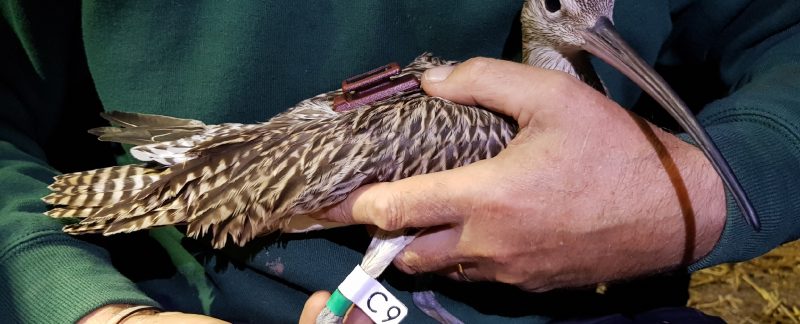WWRG are currently using small GPS/GSM tags to track the movements of ‘our’ waders. The tags record their location and download the data via the phone network. Our tagging is a development of our resighting work using leg flags (see colour-ringing projects). The small, compact tags (always under 3% of the individual’s body weight) are fitted to the backs of waders by fully trained and permitted ringers using a ‘leg-loop’ harness. We have now tagged three species and the data collected have already contributed to a published, peer-reviewed paper and a research report (see WWRG projects and Scientific papers), with other papers ‘in the pipeline’.
To date we have tagged over 30 Curlew, 15 Oystercatcher and eight Bar-tailed Godwit. For the Curlew, we are collecting data on their habitat use on The Wash, expanding our work on their winter distribution using leg flags (see WWRG projects). We are also interested in very local Oystercatcher movements to different feeding sites in The Wash to support studies of food availability and utilisation in the embayment. Finally, our Bar-tailed Godwit tagging is to look at the wider movements of this species and the different populations that occur on The Wash to further understand the importance of the embayment as both a passage and feeding site.
All of our tagging data will contribute to both local and international research, both by WWRG members and others, to aid wader conservation.

